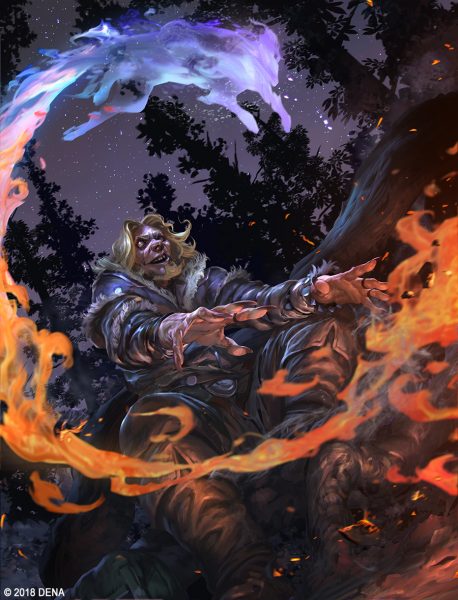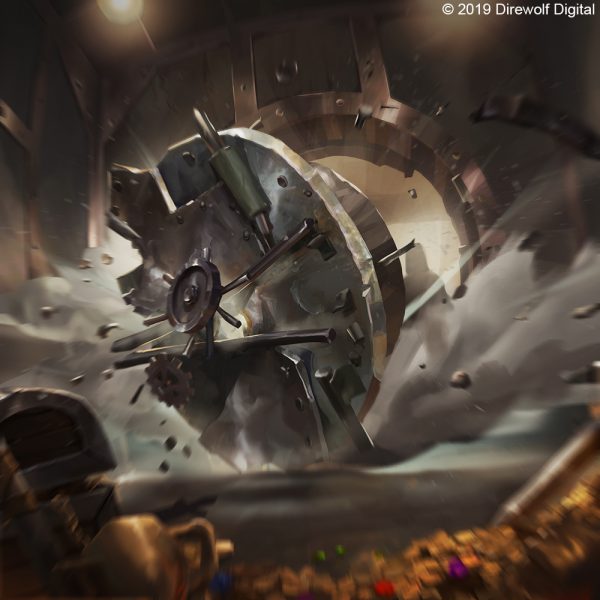Reading the Room

GM lesson: Reading the Room, by Aaron Hübrich
You’re the GM. You’re running your game and you look up from behind your screen and notice a player (or two) drifting off into space. Not physically (that would be amazing BTW) — but you see it in their eyes and mannerisms at the table. It’s become clear they haven’t been involved in the game for a while.
*thinking to yourself*
“Hmm, Jessi hasn’t done much this session. I want to get her involved somehow.”
Sure, things are going well and most of the players at the table are having fun, but you want to help everyone feel totally involved whenever you can. What do you do?
The Gaming DeeJay

As a GM, you can think of yourself as a “Gaming DeeJay”. You “read the room” to see what you can do to keep the energy up, or keep the energy appropriate for the situation the players are in. Some players will check-out pretty easy depending on what is happening. Maybe they internalize a lot — and that is totally fine. But sometimes, you can see they’re just patiently waiting to do something interesting with their character on their combat turn, and this is where you can step in and help push the situation on their behalf.
Tip: Avoid putting any player on the spot. Often times, players who are generally quiet types, or more reserved, don’t like the added attention — so think in terms of how their *character* would react to any given situation. I would recommend calling them by their PC name instead of their “in real life” (IRL) name when the time comes. This way they know it’s basically go-time for their PC. It will also make the player less likely to feel like they’ve been “caught napping”, which is what GMs want to avoid.
Can the Player be involved more?
When you notice a player who is drifting (so-to-speak), this is your opportunity to work on-the-fly. Think of what their character is and give them an opportunity to be involved. Even if it’s just a minor scenario where they talk to an NPC or interact with an object. It’s all good — and sometimes a 30-second event will help snap them right back into the game. Think of something that won’t derail the overall story you have, but can help keep everyone involved. Maybe have that interaction pay off later, or let them be the one to explain to the rest of the players what they see, or overheard, for example.
Consider passing the Player a note, pull them aside, or literally get up from your seat to whisper something in their ear. The GM will have the whole table’s attention for sure, but now the focus will be on the Player you passed this information to.
I get it. Some players “run the show” and a lot of players will follow their lead. That happens a lot, but occasionally, consider putting the spotlight on the other players that may not get to shine very often. Of course, this will need to be at an appropriate time (don’t make it obvious — be cool, man!), so maybe have a few general side-events written out ahead of time that will help flesh out the main storyline. Throw out some bread crumbs and see if they take the bait. Have the quieter players discover something by rolling dice. Have their character roll a perception check, or allow them to get involved in a way that compliments the type of character they are running.
“Oh look, you see the very faint sign of footprints that dead-end at a wall. That’s odd…”
*adventure ensues*
Use your instincts
Once the player is engaged again, pay close attention to see where their comfort zone is. Some will enjoy the spotlight, while others may be very uncomfortable. Try not to force anything as a GM. Use your instincts to gauge whether this is fun for them, or not. It should not feel like a chore at all to role-play or do things that don’t interest them, so be sure to give them the opportunity to convey how they are feeling. If resistance occurs, you can simply help to narrate what their character sees and convey that to the group. Sometimes players appreciate the help, and are totally fine with that until they warm up to the idea where they express, “I’ve got this”.
Real-world example

An example of a similar real-world social situation is karaoke. Several of my friends like to sing in front of a crowd and others like to chill out and watch their friends sing — but refrain from singing themselves. The occasional, “Do you want to sing?” question may come up to those who never sing, but no one should shame anyone, as everyone at the bar is just wanting to have a good time. In regards to the gaming table, it’s a similar spotlight social situation when role-playing, or when a character does something in-game. Support their vibe, or how they’re feeling. It’s all good and everyone there wants to have fun and should be supportive. When and if they burst out into an amazing role-playing voice, that’ll be the time you as the GM can give them the spotlight they warmed up to. Until then, help them out until they find that voice.
Summary
Reading the room is a skill you’ll develop naturally over time. Don’t be mad at yourself if, after the game, you realize a player had checked out. Just take mental notes after a session to see if everyone was as involved as they could be and then take opportunities in the next session to keep those more passive players involved. You’ll get the hang of it after a few tries and the payoff will be happier players that start to come out of their shell more often.
Be the Gaming DeeJay and have fun reading the room.
Happy gaming!

Aaron Hubrich
Editor, Producer
Reading the Room

*thinking to yourself*
“Hmm, Jessi hasn’t done much this session. I want to get her involved somehow.”
Sure, things are going well and most of the players at the table are having fun, but you want to help everyone feel totally involved whenever you can. What do you do?
The Gaming DeeJay

As a GM, you can think of yourself as a “Gaming DeeJay”. You “read the room” to see what you can do to keep the energy up, or keep the energy appropriate for the situation the players are in. Some players will check-out pretty easy depending on what is happening. Maybe they internalize a lot — and that is totally fine. But sometimes, you can see they’re just patiently waiting to do something interesting with their character on their combat turn, and this is where you can step in and help push the situation on their behalf.
Tip: Avoid putting any player on the spot. Often times, players who are generally quiet types, or more reserved, don’t like the added attention — so think in terms of how their *character* would react to any given situation. I would recommend calling them by their PC name instead of their “in real life” (IRL) name when the time comes. This way they know it’s basically go-time for their PC. It will also make the player less likely to feel like they’ve been “caught napping”, which is what GMs want to avoid.
Can the Player be involved more?
When you notice a player who is drifting (so-to-speak), this is your opportunity to work on-the-fly. Think of what their character is and give them an opportunity to be involved. Even if it’s just a minor scenario where they talk to an NPC or interact with an object. It’s all good — and sometimes a 30-second event will help snap them right back into the game. Think of something that won’t derail the overall story you have, but can help keep everyone involved. Maybe have that interaction pay off later, or let them be the one to explain to the rest of the players what they see, or overheard, for example.
Consider passing the Player a note, pull them aside, or literally get up from your seat to whisper something in their ear. The GM will have the whole table’s attention for sure, but now the focus will be on the Player you passed this information to.
I get it. Some players “run the show” and a lot of players will follow their lead. That happens a lot, but occasionally, consider putting the spotlight on the other players that may not get to shine very often. Of course, this will need to be at an appropriate time (don’t make it obvious — be cool, man!), so maybe have a few general side-events written out ahead of time that will help flesh out the main storyline. Throw out some bread crumbs and see if they take the bait. Have the quieter players discover something by rolling dice. Have their character roll a perception check, or allow them to get involved in a way that compliments the type of character they are running.
“Oh look, you see the very faint sign of footprints that dead-end at a wall. That’s odd…”
*adventure ensues*
Use your instincts
Once the player is engaged again, pay close attention to see where their comfort zone is. Some will enjoy the spotlight, while others may be very uncomfortable. Try not to force anything as a GM. Use your instincts to gauge whether this is fun for them, or not. It should not feel like a chore at all to role-play or do things that don’t interest them, so be sure to give them the opportunity to convey how they are feeling. If resistance occurs, you can simply help to narrate what their character sees and convey that to the group. Sometimes players appreciate the help, and are totally fine with that until they warm up to the idea where they express, “I’ve got this”.
Real-world example

An example of a similar real-world social situation is karaoke. Several of my friends like to sing in front of a crowd and others like to chill out and watch their friends sing — but refrain from singing themselves. The occasional, “Do you want to sing?” question may come up to those who never sing, but no one should shame anyone, as everyone at the bar is just wanting to have a good time. In regards to the gaming table, it’s a similar spotlight social situation when role-playing, or when a character does something in-game. Support their vibe, or how they’re feeling. It’s all good and everyone there wants to have fun and should be supportive. When and if they burst out into an amazing role-playing voice, that’ll be the time you as the GM can give them the spotlight they warmed up to. Until then, help them out until they find that voice.
Summary
Reading the room is a skill you’ll develop naturally over time. Don’t be mad at yourself if, after the game, you realize a player had checked out. Just take mental notes after a session to see if everyone was as involved as they could be and then take opportunities in the next session to keep those more passive players involved. You’ll get the hang of it after a few tries and the payoff will be happier players that start to come out of their shell more often.
Be the Gaming DeeJay and have fun reading the room.
Happy gaming!

Aaron Hubrich
Editor, Producer

0 Comments